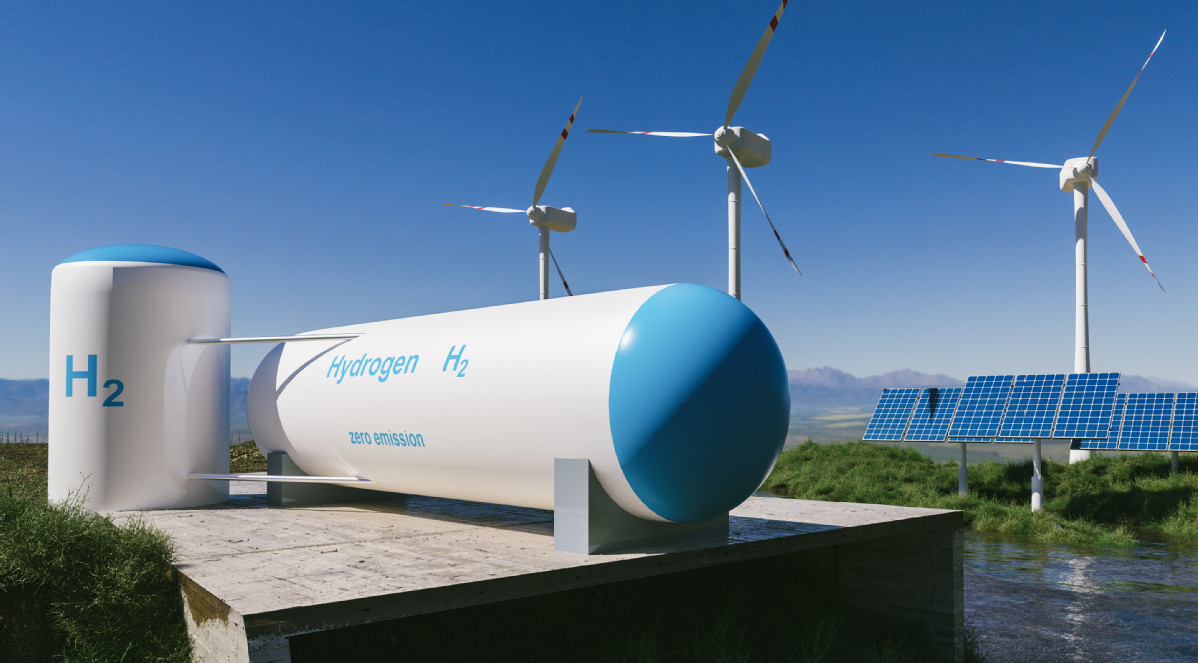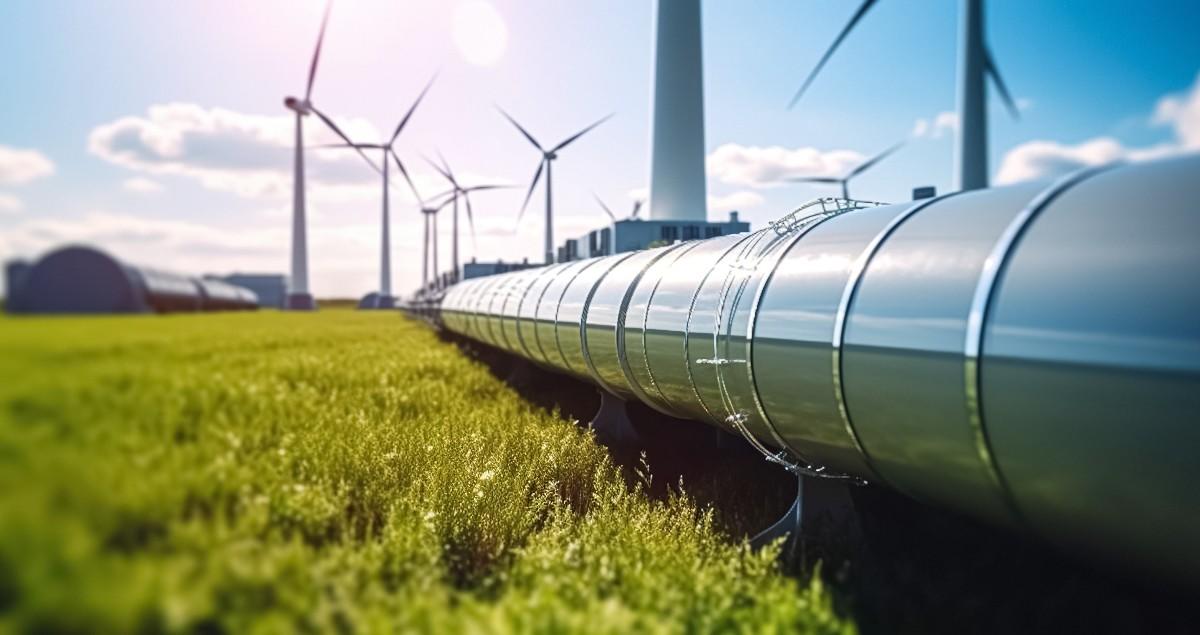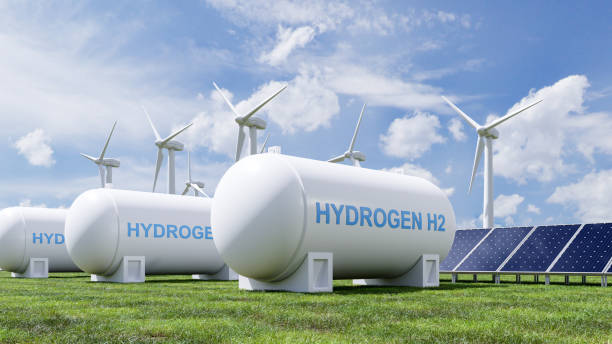Reliance Green Hydrogen and Green Chemicals, (RIL Unit )along with Bharat Petroleum Corporation (BPCL), Torrent Power, JSW Neo Energy, ACME Cleantech, and Avaada GreenH2, among others, have submitted bids for the government’s inaugural green hydrogen manufacturing tender.
In the realm of electrolyser production, Bharat Heavy Electricals, Reliance Electrolyser Manufacturing, Adani New Industries, L&T Electrolysers, Avaada Electrolysers, Waaree Energies, and Jindal India are among the 21 companies vying for incentives under the Strategic Interventions for Green Hydrogen Transition (SIGHT) scheme.
The technical bids for incentives were unveiled on Friday, concluding the submission period on December 12.
“Financial bids remain unopened at this stage and will undergo evaluation, which is expected to take some time,” stated a government official.
GH4India, a collaboration between Indian Oil Corporation, Larsen & Toubro, and ReNew, is also part of the bidding process.
The call for bids, initiated in July, aimed to establish green hydrogen manufacturing capacities totaling 450,000 tonnes annually in the first phase of the SIGHT scheme.

The SIGHT initiative is integral to India’s National Green Hydrogen Mission, launched in January with a budget of ₹17,490 crore for green hydrogen capacity and electrolysers.
Out of this, ₹13,050 crore is allocated for green hydrogen capacities until the financial year 2029-30. Among the available capacities, 410,000 tonnes per year of green hydrogen production is technology-agnostic, while the remainder is earmarked for biomass-based pathways.
The National Green Hydrogen Mission
On January 4, 2023, the Union Cabinet, led by Prime Minister Narendra Modi, sanctioned the National Green Hydrogen Mission, allocating an initial budget of Rs. 19,744 crore.
This includes Rs. 17,490 crore for the Strategic Interventions for Green Hydrogen Transition (SIGHT) program, Rs. 1,466 crore for pilot projects, Rs. 400 crore for research and development (R&D), and Rs. 388 crore for other mission components.
The mission’s broad benefits include the creation of export opportunities for Green Hydrogen and its derivatives, decarbonisation of industrial, mobility, and energy sectors, decreased reliance on imported fossil fuels and feedstock, fostering indigenous manufacturing capabilities, generating employment opportunities, and advancing cutting-edge technologies.
The anticipated Green Hydrogen production capacity for India is set to reach at least 5 million metric tonnes per annum, coupled with a renewable energy capacity addition of around 125 GW.
The projected targets for 2030 are poised to attract over Rs. 8 lakh crore in investments and generate more than 6 lakh jobs, while averting nearly 50 million metric tonnes per annum of CO2 emissions.
The mission aims to facilitate demand creation, production, utilisation, and export of Green Hydrogen.
The SIGHT program incorporates two financial incentive mechanisms, targeting domestic manufacturing of electrolysers and Green Hydrogen production.
Additionally, the mission supports pilot projects in emerging end-use sectors and production pathways. Regions capable of supporting large-scale hydrogen production and utilisation will be identified and developed as Green Hydrogen Hubs.

The Steps Undertaken
To bolster the mission, an enabling policy framework will be established, along with a robust standards and regulations framework. The Strategic Hydrogen Innovation Partnership (SHIP), a public-private partnership for R&D, will be facilitated under the mission.
Research and development projects will be goal-oriented, time-bound, and scaled up to develop globally competitive technologies. A coordinated skill development program is also planned, keeping a focus on the imperative of Ease of Doing Business, aiming for simplified processes and expeditious approvals through technology leverage.
The primary aim of the National Green Hydrogen Mission is to position India as a global hub for the production, usage, and export of Green Hydrogen and its derivatives.
By 2030, the mission envisions achieving a green hydrogen production capacity of at least 5 million metric tonnes per annum, along with an associated renewable energy capacity addition of about 125 GW, attracting significant investments, generating employment, reducing fossil fuel imports, and mitigating CO2 emissions.
Here are the expected outcomes of the National Green Hydrogen Mission by 2030:
1. Development of a green hydrogen production capacity of at least 5 million metric tonnes per annum, accompanied by an associated renewable energy capacity addition of about 125 GW in the country.
2. Over Rs. Eight lakh crore in total investments.
3. Creation of over six lakh jobs.
4. Cumulative reduction in fossil fuel imports over Rs. One lakh crore.
5. Nearly 50 million metric tonnes per annum of CO2 emissions are expected to be averted through the production and use of the targeted quantum of Green Hydrogen.

The Market Outlook
The Indian green hydrogen market is poised for significant growth by 2030, with production levels potentially reaching up to 5 million metric tonnes per annum (mmtpa), including exports, according to a recent report by Emkay.
Emkay’s estimate suggests a theoretical production of around 4.5 mmtpa, and the inclusion of targets from major players like RIL and others could push this number even higher.
Despite the optimistic outlook, there are challenges on the horizon, including the magnitude of required investments and infrastructure additions.
Concerns about storage solutions, real-time control (RTC) power needs like Pumped Storage Projects (PSP), and manpower and skill development are highlighted in the report. The chlor-alkali industry in India, which has experience with electrolysers, is suggested as a potential source of solutions.
The Government of India’s (GoI) capital expenditure, outlined at Rs 8 trillion, could be exceeded, with actual costs potentially surpassing this figure, especially when accounting for factors not included in the estimate, according to Emkay.
Factors contributing to the favorable outlook include decreasing green hydrogen costs, maturation of relevant technologies, and policy-driven incentives.
The report notes that achieving the goals set for 2030 remains within reach, considering the commissioning period for solar, wind farms, and electrolysers.
Emkay’s conservative projection suggests green hydrogen production could be around 3 mmtpa by 2030, requiring approximately 36 GW of electrolyser capacity and 75 GW of effective renewable energy capacity.
The projected reduction in CO2 emissions is estimated at 0.5 billion tonnes, as opposed to the Government of India’s target of 0.8 billion tonnes for 5 mmtpa.
In terms of business viability, the green hydrogen sector, based on a target levelized Return on Equity (ROE) of 15%, could achieve a 25% Earnings Before Interest, Taxes, Depreciation, and Amortization (EBITDA) margin.
The report highlights that a company producing 1 mmtpa of green hydrogen in 2030 could generate an annual Profit After Tax (PAT) of Rs 10 billion.
The report also touches upon the potential growth in the electrolyser manufacturing sector, noting that profitability remains uncertain. However, with advancing technology and scaling up, Emkay predicts that EBITDA margins could reach 15-20%, with a preference for alkaline electrolysers, although other technologies could secure a larger market share if unit economics improve.
The Viewpoint
As the Indian green hydrogen market looks ahead to 2030, there is a palpable sense of optimism tempered by inherent challenges.
The market could potentially witness a substantial production surge, reaching up to 5 million metric tonnes per annum (mmtpa), including exports.
The Emkay report indicates theoretical estimates around 4.5 mmtpa, with the possibility of surpassing this figure with contributions from major players like RIL.
However, challenges loom large, ranging from massive required investments to infrastructure concerns such as storage solutions, RTC power needs, and skill development.
The Government of India’s projected capital expenditure of Rs 8 trillion may face potential overruns, considering unaccounted factors. Despite these hurdles, decreasing green hydrogen costs, technological advancements, and policy-driven incentives create a favorable outlook.
The conservative projection suggests a production of around 3 mmtpa by 2030, accompanied by a substantial reduction in CO2 emissions.
The viability of the green hydrogen business, with a target levelized Return on Equity (ROE) of 15%, presents an encouraging picture. An estimated Earnings Before Interest, Taxes, Depreciation, and Amortisation (EBITDA) margin of 25% implies a lucrative venture.
Companies producing green hydrogen could generate significant profits, with the potential for a robust electrolyser manufacturing sector.

The Last Bit, India’s journey towards becoming a global hub for green hydrogen production, usage, and export is marked by promising targets and pragmatic challenges.
The nation’s commitment to reducing carbon emissions, industry initiatives, and evolving technologies positions green hydrogen as a transformative force in India’s energy sector.
While hurdles persist, the prospects of achieving ambitious production levels and economic viability make the green hydrogen market a focal point for India’s sustainable future.



